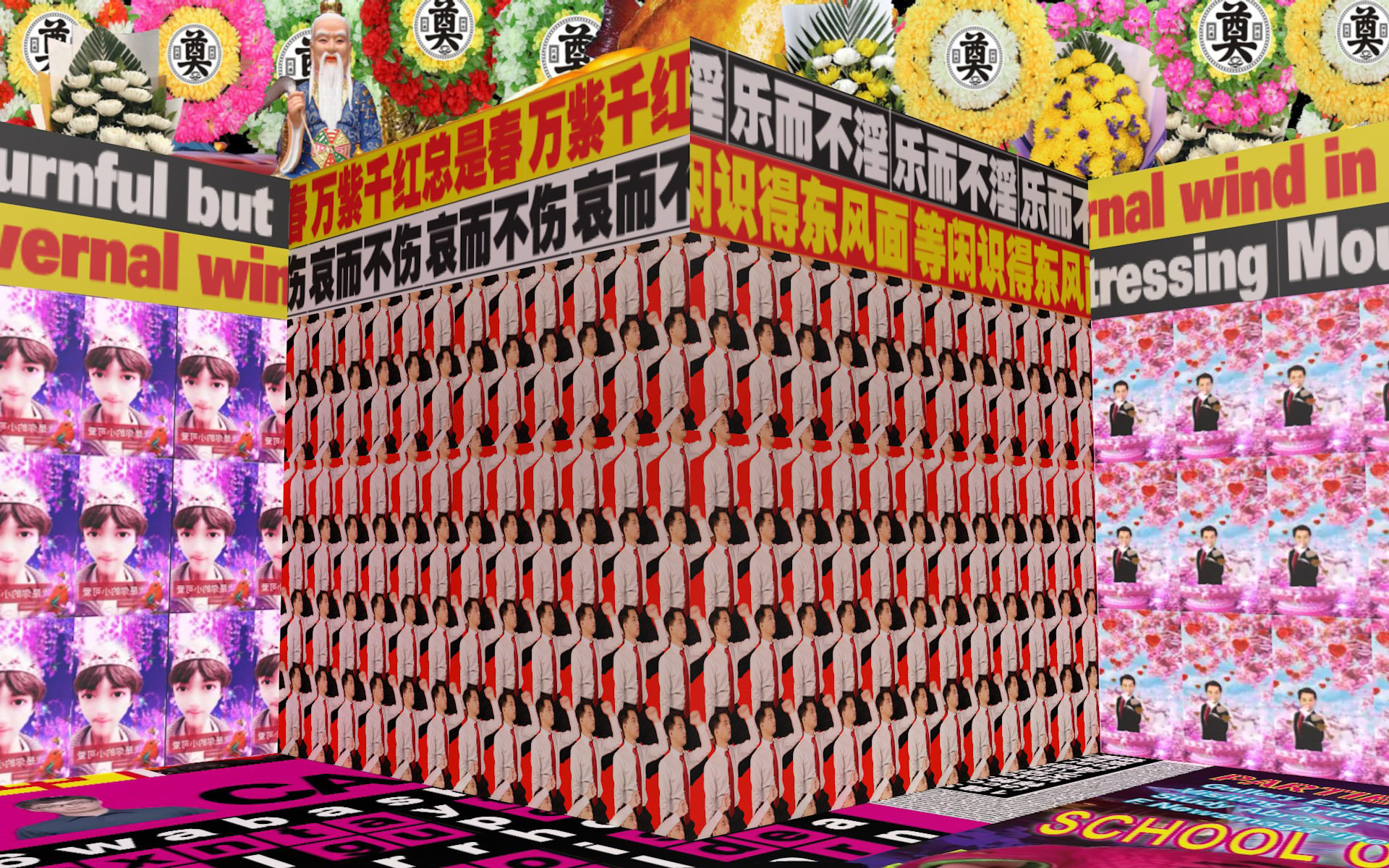Craft: The Reset, the newest exhibition at Shenzhen’s Design Society gallery, brims with rich textures and details. A deconstructed paper pavilion spirals gracefully off into space; a woven bamboo screen made up of different geometric patterns gleams under the light.
Every few items, I’m compelled to stop and snap another picture. Here, a graceful high-heeled shoe pieced together from mulberry paper and raw silk strands; there, a layered paper-and-fabric chair painted with peonies and chickens.
Sometimes, it’s the details behind an object’s construction that stand out the most. A pair of towering vases, one sea-foam green and the other vermilion, is covered with a deceptively simple pattern of ridged ovals. But their making required study of Chinese cloisonné enamel work as well as 3D printing: Hong Kong-based British creator Michael Young used both, plus Turkish ceramic techniques, to cast and produce the vases.
It’s only one example of tradition meeting modern ways of thinking in order to produce new forms of design. And like the vases, much of the new exhibit has an international flavor.
Related:
 Design Society Shenzhen: Conservative Curatorial at a Cutting-Edge InstitutionArticle Apr 19, 2018
Design Society Shenzhen: Conservative Curatorial at a Cutting-Edge InstitutionArticle Apr 19, 2018
Some featured artists are foreign, while others are inspired by global attitudes and trends, as curator Azinta Plantenga explains. “[As] designers coming back from studying abroad, they bring with them new awareness of their own culture.”
Together, they contribute to China’s current homegrown craft revival movement, Design Society chief curator Carrie Chan adds. She cites PINWU Studio as an example – the Hangzhou-based group, made up of three designers, has studied traditional Chinese craft since 2009. Together, they began inviting others to create projects using bamboo, silk, mud, and more, eventually compiling a “craft material library” from the results.
They’re far from alone, according to Chan. The new exhibit in Shenzhen also includes work by pioneering craft-inspired artists such as bamboo-based designer Jeff Dayu Shi and experimental musician Zhu Zeqin, also known as Dadawa.
“They are very representative of this movement and they started quite early on to explore the traditional values that are embedded in craft,” says Chan.
Not that their work heralds a return to the past. In fact, at a press preview of Craft: The Reset, Dadawa herself orchestrated a dazzling, somewhat bewildering performance that involved her and multiple volunteers shining flashlights through a forest of flickering glass filaments in a dark room. Underneath, an electronic soundtrack pulsed, rattling and reverberating through the installation.

The performance, an official description related, “projects the non-tangible dimension of craft” in addition to the physical one. By allowing viewers to join in the show, the work shows that “every person is [a part of] art,” Dadawa told a crowd of reporters afterwards. It’s also meant to help bring new appreciation for craftsmanship into viewers’ lives.
And in fact, according to the curators, a love of craft has hit mainstream culture in China.
Chan points out that, in the realm of online shopping, “if you use the word ‘craft’ and go on Taobao, there’s a lot of things you can see. Of course some of them are actually mass-produced… But I think some of them are actually real craftsmen who have used the Taobao platform to promote their stuff.”
Over recent years, classes in traditional handicrafts – painting, pottery, and the like – have also surged in number and popularity, especially among the young.

Design Society, too, held its own craft event earlier this year. In August, Dutch designer Henny van Nistelrooy taught a workshop on making decorative mazha, traditional foldable stools that are “a symbol of impromptu social gatherings,” according to press materials provided by the gallery.
Some of those works were included in Craft: The Reset, the colorful woven seats elevating a humble household item into something larger.
“We feel that crafts can promote social cohesion, and with a lot of them [the production process] can be practiced by anyone, really, not just designers,” Chan says.
True, your average Zhou may be far from churning out works like Zhang Junjie’s abstract bamboo sculptures or Lin Li’s delicate paper-and-polyester clothing. But viewers at Design Society’s third and latest exhibition can at least look, marvel, and learn about a gorgeous array of crafted objects, as well as the thinking that inspired them.
All photos by Bailey Hu for RADII.
—
You might also like:
 Design Society Shenzhen: Conservative Curatorial at a Cutting-Edge InstitutionArticle Apr 19, 2018
Design Society Shenzhen: Conservative Curatorial at a Cutting-Edge InstitutionArticle Apr 19, 2018
 Artist Li Yiwen is Making Erotic Chinese Ink StampsArticle Sep 26, 2018
Artist Li Yiwen is Making Erotic Chinese Ink StampsArticle Sep 26, 2018
 The Ox Horn Comb: A Thoroughly Traditional, Thoroughly Modern Chinese Beauty TrendArticle Apr 11, 2018
The Ox Horn Comb: A Thoroughly Traditional, Thoroughly Modern Chinese Beauty TrendArticle Apr 11, 2018

























